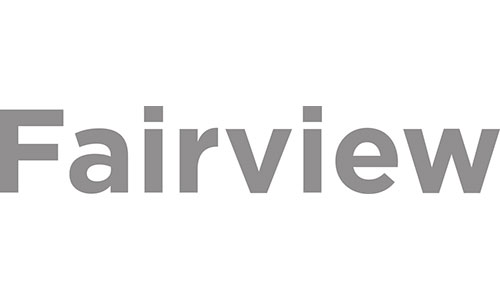Ah. The podcast.
A greatly underpriced platform that has proven to be highly successful. A platform for you to tell your story differently. For us, our podcast isn’t just an awesome way for us to distribute our content, but it’s also a chance for us to show a bit of our Power of Play personalities while having some fun.
Thinking about starting a podcast of your own?
We’ve been doing our 8Bit Podcast for quite some time now and we’re not going to lie: it takes hard work, practice, and creativity. We’re just starting to get into our own podcast “groove,” but along the way we’ve discovered some pretty important lessons, and had some pretty solid experiences that we thought we’d share.
Why podcast?
First of all, you have to ask yourself, why do you want to start a podcast in the first place? Honestly, it’s a great platform. It’s incredibly underpriced at the moment, it’s easy to distribute content from your podcast across multiple channels, and all you need to start one is a phone or laptop, the internet, and something to talk about. BUT if your target audience isn’t using this platform, why spend precious content creation time there? As podcasting becomes more popular, it’s true that your target audience may start to move there—if this is the case for you and the trends you are seeing in your market, we suggest moving there now, setting up camp, and starting early to get the most value and listeners out of the podcast platform. And if your target audience is already there, what are you waiting for?!
Our top podcasting tips
1. Take advantage of the story-telling platform
Like social media, there is great opportunity to tell a story in a new way on this platform. Maybe you’re not the best writer, or, in terms of graphic design you don’t really have a knack for it. But maybe you’ve been told that you have a great voice and you’ve got a story to tell. This is a great opportunity for you to capitalize on a platform where you can be comfortable distributing content that you feel confident in sharing.
2. Understand that you will learn as you go
Your very first podcast might be rough. But no worries, you will soon begin to develop your tone and voice as you go—you have opportunities to change and tweak the way you want to sound, what segments you want to incorporate, and, as you gain a following, will be able to tailor your content to make it more focused on what your listeners want to hear.
3. You don’t just have just “one shot” at launching
This goes for all of your content. You don’t have “one shot” at launching anything—just start putting out your content and work as you go. It would be nice if your very first podcast drew a crowd, and everyone started talking about it because you were funny, interesting, and your content was worth retweeting—but in reality, that’s probably not too likely. What is likely is that it might take one podcast episode to turn things around. Maybe it’s episode #2, maybe it’s episode #222. Who knows? But one things for sure, you’ve got plenty of room to learn and build your foundation.
4. Be running Facebook and Instagram with your podcast
We’ve alluded to this but circulate your podcast around your social channels—maybe not entire podcasts, but share micro content in your business’s Facebook story, give a shout out to your latest podcast, or make a point of announcing you’re launching a podcast to get people excited. Social media is the best opportunity to do this, and make sure you link your podcasts back to your social sites for easy sharing.
5. Focus on winning the attention that’s already listening to podcasts
We said it before (and we’ll say it again), go to where the attention already is. If your target audience is already listening to podcasts, that’s why you’re there—so make the listeners who listen to podcasts a top priority rather than spending time fighting to get people to go to the platform to find you.
6. Brainstorm ideas and have an awesome concept that you’re passionate about
Spend a significant amount of time brainstorming with your team, people in your company, people outside your company, your friends, your family, your barista—whoever will help you get those creative juices flowing to help you get some topics to talk about. Maybe you have an entire list of ideas—that’s great, but also take into consideration the thoughts and ideas of others, you never know when a great topic for a podcast may strike. And always talk about what you’re passionate about, if you’re not excited to talk about something, DON’T. Your audience will know if you lack enthusiasm in your voice when you’re podcasting. So, save everyone the pain and misery and pick something you love to talk about.
7. Take the time to come up with a cool name
8Bit Podcast. Doesn’t get much cooler than that, right? Well, we like it. It doesn’t stray from our identity and it’s easy to remember. Oh, if you don’t know what 8Bit is, it’s a geeky designer’s term that has to do with an image file—each pixel is represented by one 8-bit byte. Clever huh? Our point: take the time to come up with something that you really like. Sure, you can change your name down the road, but if you do, it takes time to get a following back and there’s the particulars of changing your identity system. Extra work that you shouldn’t be worried about when you should be focused on creating solid content.
8. Learn how to edit and research equipment
When we first started our podcast, we started out with GarageBand, some old mics, and a desire to figure it out. And… jumping ahead we’ve invested in some pretty nice equipment, and upgraded to audio AND video. While we are big believers in investing in solid equipment for a podcast (trust us, a solid mic makes a difference), we are bigger believers in the fact that you just need to start somewhere. Can’t afford a mic yet? Your phone will work just fine. Just keep at it and educate yourself on what equipment would work better for you down the road as you gain a following; because you still want to provide a quality experience.
Side note: if you’re curious about what equipment to use, we recommend researching on Amazon to start. They typically have podcast bundles to get you started!
9. Determine how you want to distribute it
We have used iTunes as our main distribution channel, but there are plenty of distribution and housing services for podcasts:
Just to name a few.
Research. See what will work best with what you are hoping to achieve and who you’re hoping to reach. We are currently using iTunes for our audio, and YouTube for our video. Oh, and our website too. Like we said, be sharing your stuff on social.
10. Follow podcasts you like to pick up more tips
Okay, so obviously we don’t mean to try to be a copycat just because someone you like has a million people listening. It’s okay to imitate what you like or see from other podcasters, like the lighting, or the incorporation of a sound bite, but you have to be original if you’re going to succeed. Focus on your content and the message you are trying to convey. No one tells a story like you.
11. Consider if you want both audio and video
For us, video and audio just made sense. We wanted video as an extra layer to showcase our personality and to use it for future micro content. But obviously, it’s not necessary for a podcast and it also means additional expenses when it comes to investing in a quality camera, lighting, transcribing services etc.
12. Control your environment
This one varies… if your podcast is “Podcasting on the Subway,” then I’m sure you are aware that you have lack of control in that environment. But for the majority of people, finding a place where you can podcast from a quiet spot is key, not only for the listener (who won’t have to decipher what you’re saying), but it might make it easier for you to focus on your topic too, and get into a routine for where and how you want to run future podcast episodes.
13. Brand your podcast
Your podcast still needs to be branded like your other brand identity elements in your business. Your name, icon, how you introduce the show, and any other identity elements should be aligning with the brand standards you already have in your business. A podcast is going to consist of more elements than just your voice (this is especially true if you incorporate video), so be prepared to brand it accordingly.
14. Spread the word to friends and family
Talk to friends, family, your barista, whoever, and tell them about your podcast. Take your online podcast and share it offline with people who can help spread the word, eventually, you’ll have the ears you want listening.
15. Just go out and create something—and be patient
Your podcast will evolve, grow, and your company will too. Your priorities on your podcast next month will probably be different for those for next year. You will find your niche audience—understanding that your podcast can’t be everything for everyone. It can be easy to get caught up in how many people are listening—but even if you only have three people listening, who cares? They just might be the three people you need. Be patient and you will grow.
Your podcast is a great piece of content that will be out on the internet forever, but the more you do it the more you will get out of the organic process. Embrace the medium and have fun!
{{cta(‘1b74c13b-9482-426b-a63c-c5b4dced04b4’)}}



